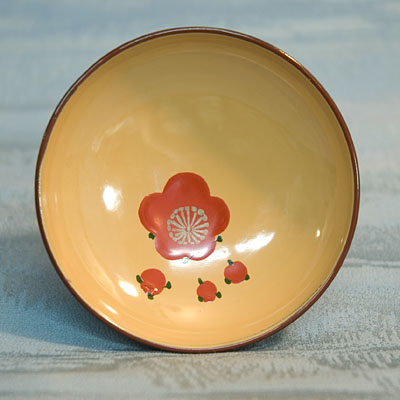
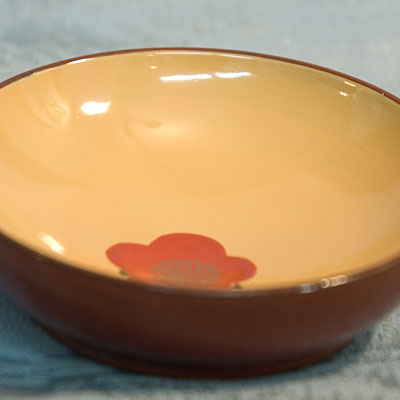
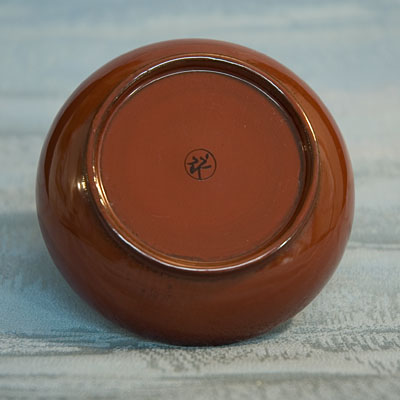
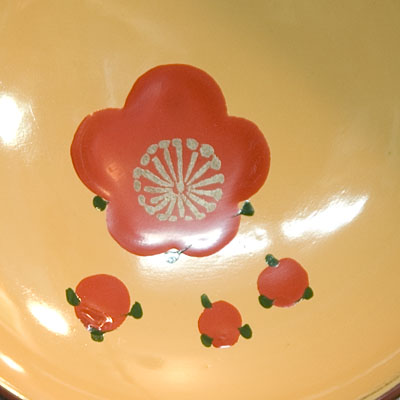
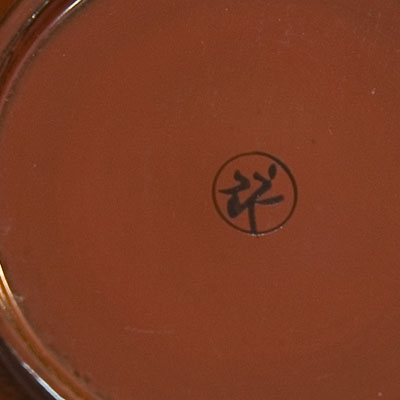
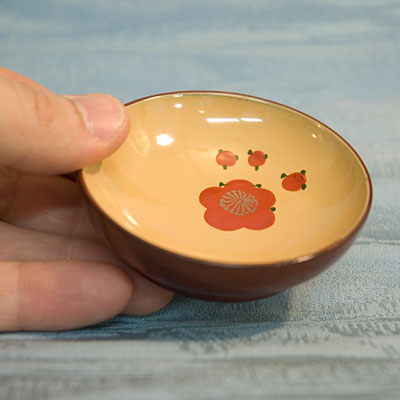


Description
This splendid high quality wood and lacquer sake cup (guinomi in Japanese) features a hand-painted floral image on the inner surface and the brush-applied mark of the maker on the underside. This sake cup was made during the mid to late Japanese Showa period (1926-1989) and is in very good condition with no chips, cracks or large scratches and only small marks from handling and possible past use. The cup was acquired in the beautiful and historic city of Shizuoka, Japan near the foot of Mt. Fuji. Please click here to see more cups from this same set or here to see our complete selection of sake cups!
Size:
Height: 0.8 inches (2.1 centimeters)
Diameter (across top): 3.0 inches (7.6 centimeters)
Weight: 0.7 ounces (21 grams)
Click here to see additional sake items!
Click here to see additional treasures from Japan!
More about Japanese sake and sake utensils
Sake has long been an important part of Japanese culture. In the past, sake was considered a very special item, reserved for only the most important occasions, such as weddings, birth celebrations and other auspicious events. Sake was considered a sacred drink, and accordingly the first glass poured was always offered to the gods before the remainder could be shared among the celebrants. Sake can be served either warm or cold and special sake flasks are used to both prepare and dispense this unique Japanese drink. Sake is warmed either by immersing the flask (already filled with sake of course) into warm water until the desired temperature is reached or through the use of a special sake kettle called a choshi. The latter method however, though common in old Japan, is today usually reserved for ceremonial events only. Over time, sake utensils, such as cups have developed their own ritual significance which is still evident in modern Japan. For example, it is today common at Japanese engagement parties for the man and woman to exchange sake cups as a sign of their mutual intent to marry. Very beautiful sake cups are also given away to celebrate the birth of a child, as these cherished items are considered symbolic of the significance of the new parent-child relationship. Though normally small in size, sake cups and flasks have long been used in Japan as a medium for the expression of art and calligraphy. Hand-painted cups and flasks are highly collectable both within and outside Japan and are eagerly sought after by collectors who value their utilitarian nature and artistic splendor.
item code: R3S6B1R12-0004440
category code: SAKECUP BRNHANAGUI
ship code: L1650
Leave a comment